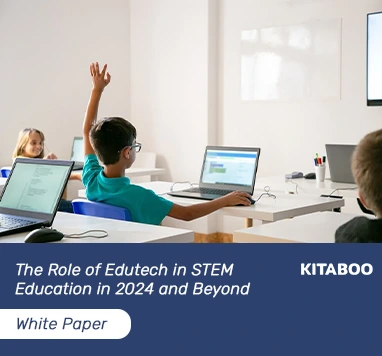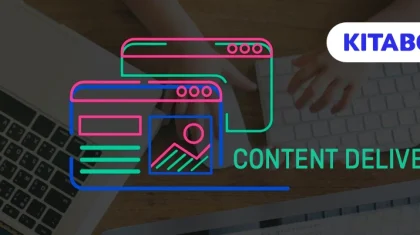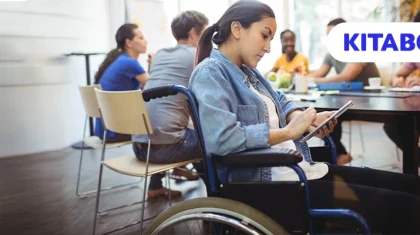
How to Create Engaging Teaching Materials That Students Will Love
In today’s dynamic educational landscape, where remote learning has become a new norm, keeping students engaged is more crucial—and challenging—than ever. With the majority of students now learning remotely, this challenge has escalated.
A recent survey among 1,008 undergraduates paints a stark picture: Post-transition to online learning in Spring 2020, satisfaction rates plummeted, with only 19% of students feeling very satisfied compared to 51% pre-pandemic. The struggles are real – decreased interest (57%), limited collaboration (65%), and dwindling motivation (42%).
It’s not just about delivering content; it’s about doing it in a way that captures and retains student interest, fostering an environment where learning thrives.
This article will outline strategies to boost the effectiveness of teaching materials to help you navigate the complexities of online teaching.
Read on!
Table of Contents:
I. Strategies for Creating Engaging Teaching Materials for Your Students
- Embrace Diverse Learning Styles
- Embrace Technology in Your Teaching
- Articulate Learning Goals Clearly
- Promote Active Learning among Your Students
- Foster Relevance and Real-World Connections
- Use Visuals and Design Strategically
- Provide Timely and Constructive Feedback
II. Conclusion
Strategies for Creating Engaging Teaching Materials for Your Students
Below are several strategies you can follow to create engaging teaching materials for your students:
1. Embrace Diverse Learning Styles
To create truly engaging teaching materials, it is imperative to comprehend the diverse learning styles present in any classroom.
Consider integrating visual aids for visual learners, hands-on activities for kinesthetic learners, and comprehensive textual explanations for auditory learners.
Embracing this inclusive approach caters to the varied needs of your students, helping you create an environment conducive to effective learning.
2. Embrace Technology in Your Teaching
In the digital age, technology serves as a powerful ally in crafting engaging teaching materials. Utilize multimedia elements, such as videos, interactive simulations, and online quizzes, to captivate the attention of tech-savvy students.
For example, you can enhance student engagement by integrating polls and skill-based assessments through the multimedia features offered by KITABOO, the digital textbook platform.
The incorporation of technology not only enriches the learning experience but also prepares students for the demands of the contemporary world.
3. Articulate Learning Goals Clearly
Begin the material creation process by establishing clear learning objectives. Clearly defined goals not only impart a sense of direction but also cultivate purpose and clarity.
When students understand what they are expected to achieve, engagement levels rise. They perceive the material as a meaningful contribution to their academic journey, facilitating a deeper connection to the educational content.
Ensure that your teaching materials align seamlessly with established curriculum standards. This adds credibility to your content. It also ensures students’ exposure to vital concepts and skills stipulated within the educational framework.
In this regard, digital publishing platforms like KITABOO, provide a seamless solution. It makes the creation of learning objectives, flashcards, MCQs, and chapter summaries exceptionally easy.
4. Promote Active Learning among Your Students
Converting passive recipients into active participants is a key facet of engaging teaching materials. Infusing interactive elements such as group discussions, case studies, and problem-solving activities empowers students.
Also, integrate reflective exercises into your teaching materials, prompting students to contemplate their understanding and experiences.
Encourage the articulation of ideas through essays, journals, or class discussions. Cultivating metacognition, reflection enables students to deepen their understanding of the subject matter. It fosters a sense of ownership over their learning journey.
5. Foster Relevance and Real-World Connections
Compelling teaching materials bridge theory and reality, resulting in an educational journey that transcends classroom boundaries. They prepare students for the complexities of the world they will encounter beyond the academic realm.
Incorporate diverse perspectives and cultural references in your teaching materials. A multicultural approach not only promotes inclusivity but also enriches the learning experience by exposing students to a variety of viewpoints.
This broadens their worldview, fostering a sense of curiosity and appreciation for the diversity inherent in the subject matter.
6. Use Visuals and Design Strategically
Elevate your teaching materials through the strategic integration of visual elements. This approach aids comprehension and enhances the overall aesthetic appeal, contributing to an engaging learning environment.
Visual elements are pivotal for the overall appeal of teaching materials. Employ a judicious mix of graphics, charts, and diagrams to break up textual information and enhance visual appeal. This not only facilitates information retention but also accommodates the preferences of visual learners, ensuring a well-rounded engagement strategy.
Maintain a consistent and user-friendly design throughout your teaching materials. Disorganized layouts or inconsistent formatting may distract, diminishing the overall effectiveness of the content.
A cohesive design fosters a sense of professionalism and aids in the seamless navigation of the material, enhancing the overall learning experience.
7. Provide Timely and Constructive Feedback
Establish an effective learning ecosystem by incorporating mechanisms for timely and constructive feedback. Empower students to gauge their progress, fostering a positive atmosphere that catalyzes their academic development.
Integrate feedback mechanisms within your teaching materials to provide students with timely insights into their progress.
Whether through self-assessment quizzes or peer evaluations, feedback reinforces learning objectives and empowers students to take an active role in their learning journey.
When offering feedback, prioritize specificity and constructiveness. Highlight students’ strengths and areas for improvement, steering them towards a more profound comprehension of the subject matter.
Constructive feedback not only serves as a valuable learning tool but also cultivates a supportive learning environment.
Wrapping Up
The journey of crafting compelling teaching materials is a continuous quest for innovation and adaptation. As education evolves to meet the ever-changing needs of students in the 21st century, educators need to stay dynamic in their approaches.
In the realm of publishing teaching materials, educators can seamlessly create highly customizable content by leveraging digital textbook platforms such as KITABOO. It streamlines the process of publishing, licensing, and distributing teaching materials widely and efficiently.
Write to us at contact@kitaboo.com to know more!
Discover How An Ebook Conversion, Publishing & Distribution Platform Can Help You
Kitaboo is a cloud-based content platform to create-publish & securely distribute interactive mobile-ready ebooks.
[double_button f_b_text=”REQUEST DEMO” f_url=”https://kitaboo.com/request-demo/?utm_source=blog&utm_medium=cta&utm_campaign=blog%20cta%20button” f_t_color=”#ffffff” f_b_color=”#f26051″ s_b_text=”READ MORE” s_url=”https://kitaboo.com/publishers/?utm_source=blog&utm_medium=cta&utm_campaign=blog%20cta%20button” s_t_color=”#ffffff” s_b_color=”#095e8e”]Discover how a mobile-first training platform can help your organization.
Kitaboo is a cloud-based platform to create, deliver & track mobile-first interactive training content.






